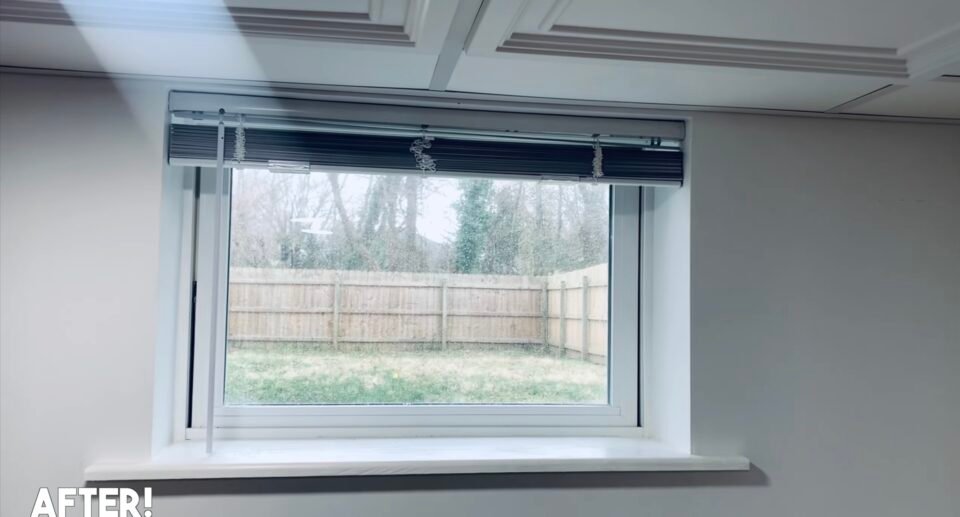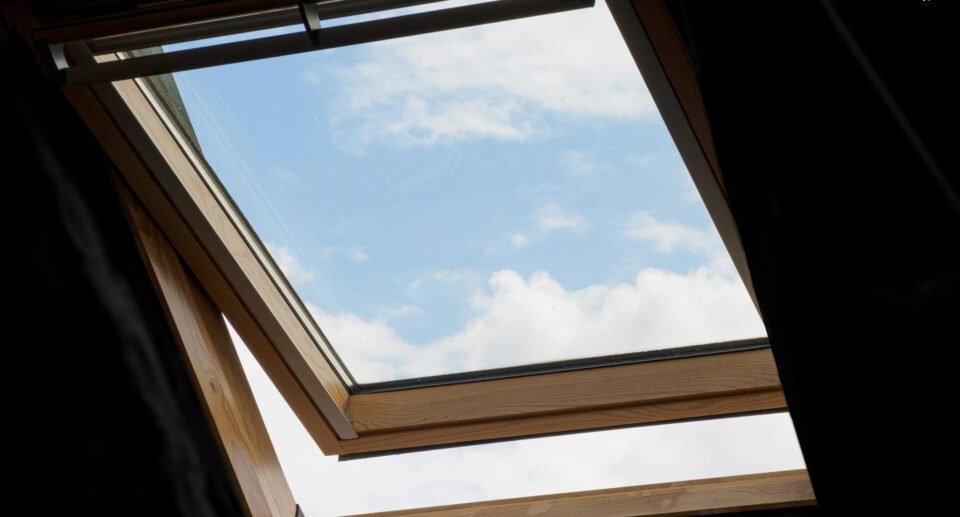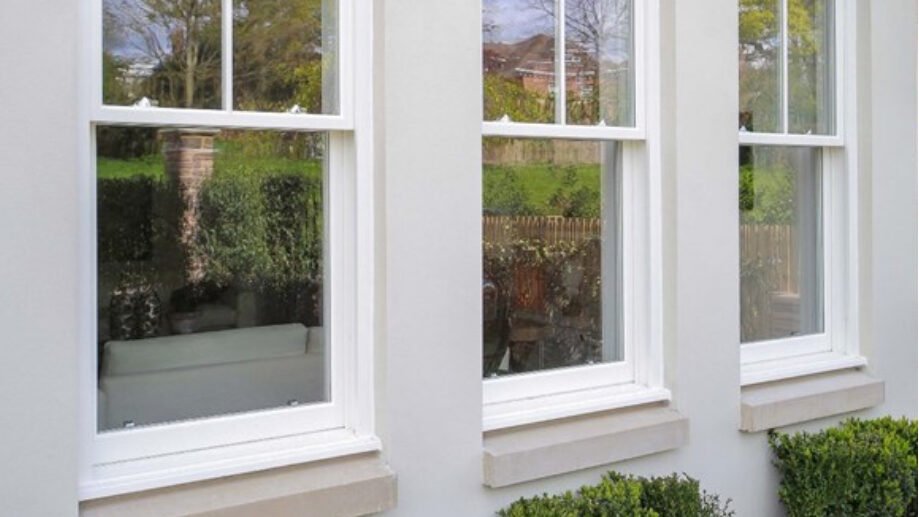Basement Window Replacement 101 Guide: Enhancing Ventilation and Security All YOU Need to Know

Table of Contents
ToggleBasement window replacement is an important consideration for homeowners looking to enhance the comfort and functionality of their below-ground living spaces.
Whether aiming to increase natural light, improve ventilation, or ensure safety compliance through egress windows, updating your basement windows can have a transformative effect.
These changes can turn an often-overlooked area into a more inviting and habitable part of your home.
When planning a basement window replacement project, understanding the variety of window types and materials available is crucial.
Choices range from glass block windows offering privacy and security, to sliding, casement, or hopper windows that can provide ease of use and better airflow.
It’s also essential to consider the window’s potential to resist moisture and reduce energy loss, which directly impacts overall comfort levels and energy bills.
Preparing for installation involves not only selecting the right window but also ensuring that the surrounding area is ready for the change.
This includes examining the window well for necessary repairs or enhancements and considering the grading to prevent water problems.
Understanding the specifics of the installation process, whether you’re embarking on a DIY project or hiring a professional, will lead to seamless integration of the new windows into your basement.
Key Takeaways
- Replacing basement windows can significantly increase a home’s comfort and living space appeal.
- A well-planned replacement ensures the right window type and material are chosen for optimal functionality.
- Proper installation and maintenance are key to long-term performance and efficiency of basement windows.
Understanding Basement Windows
Your basement windows serve critical functions, from ensuring safety to enhancing energy efficiency.
As you explore your options, consider types suitable for your home, the benefits of upgrading, and common issues that necessitate replacement.
Types of Basement Windows
- Awning Windows: These are hinged at the top and open outward, providing protection from rain while allowing ventilation.
- Slider Windows: Slider windows operate horizontally and are easy to use, making them a popular choice for basements with limited vertical space.
- Glass Block Windows: With their thick, patterned glass, glass block windows increase privacy while letting in light. They are particularly sturdy and can improve security.
- Egress Windows: These windows are large enough to serve as an emergency exit, which is a critical safety feature in basement bedrooms or living spaces.
- Single-pane Glass Windows: Often found in older homes, these windows have a single layer of glass and are less energy-efficient than their double or triple-paned counterparts.
Benefits of Replacement Basement Windows
- Improved Energy Efficiency: Replacing old, single-pane glass windows with energy-efficient models can reduce your heating and cooling costs.
- Enhanced Security: Newer window models often come with better locks and reinforced frames, providing an additional layer of security.
- Increased Property Value: Upgraded windows can improve the overall aesthetic of your home and may increase its market value.
Common Issues with Basement Windows
- Condensation and Moisture: Over time, window seals may fail, leading to condensation between panes or around the window, which can damage surrounding structures.
- Drafts: Old or damaged windows can let in cold air, leading to increased energy bills and an uncomfortably cool basement.
- Difficulty Operating: Windows that are difficult to open or close may have balance issues or could be painted shut, which is especially problematic for egress windows needed for emergency escape.
Planning Your Replacement Project
When embarking on a basement window replacement, it’s crucial to accurately assess the state of your existing windows and select the right type of replacement window. Your choices will affect both the functionality and energy efficiency of your basement.
Assessing the Current Window Situation
Examine your old window closely to determine its condition.
Check the window frame for signs of damage such as cracks or rot, which can compromise the structure and lead to issues like drafts and water penetration.
Condensation between panes or noticeable drafts are indicators that the window seal may have failed, leading to energy loss and a potential increase in your utility bills.
If your old window is a hopper window or an awning window, note how it operates as the replacement window should accommodate similar functionality to fit your needs.
Choosing the Right Replacement Window
When selecting a replacement window, prioritize energy efficiency.
Look for features such as double or triple panes, low-E coatings, and proper insulation values.
The choice often comes down to materials like vinyl, which is known for its durability and low maintenance requirements.
Consider a modern vinyl window because it will likely provide better insulation, last longer, and require less upkeep than older materials.
Make sure the new window matches the dimensions of the existing rough opening to ensure a proper fit, minimizing the need for extensive adjustments or wall repairs.
Preparing for Installation
Ensuring proper measurements and preparing the necessary tools and safety measures are pivotal before commencing the replacement of a basement window to guarantee a smooth installation process.
Measuring the Rough Opening
Before purchasing a new window, you must accurately measure the rough opening where the window will be installed.
Measure the height and width at multiple points within the opening to account for any irregularity in the shape of the opening.
Take the smallest measurements to ensure the new window fits correctly.
When noting down the size, always measure from jamb to jamb for the width, and from the header to the sill for the height.
Selecting Tools and Materials
To remove the old window and install a new one effectively, you’ll need a selection of tools and materials at your disposal:
- Pry Bar: For removing the old window frame and any trim.
- Reciprocating Saw: Essential for cutting through nails, screws, or the frame itself if it’s made of metal or wood.
- Screws: Needed for securing the new window in the opening.
- Level: Ensures that the new window is installed squarely for proper operation.
- Utility Knife: Useful for trimming away excess insulation or opening packaging.
- Concrete: If the rough opening requires adjustment, you may need concrete to fill in gaps.
Prepare these tools and materials in advance to maintain an efficient workflow during installation.
Protective Measures
Prior to initiating the installation, it’s crucial to take several protective measures:
- Wear gloves to protect your hands from sharp edges and debris.
- Ensure the work area is clear of any obstacles and debris to prevent tripping or accidental damage to the new window.
- Having a covering like a tarp or dust sheet can help contain dust and debris when cutting the old frame or concrete.
How to Replace Basement Windows
Replacing your basement window can increase both the energy efficiency and safety of your home. It involves careful removal of the old unit and precise installation of the new one to ensure a proper fit and seal.
Remove the Old Window
Before installing a new window, you need to carefully remove the existing one. If rot has set in, proceed with caution to avoid damaging the surrounding structure.
- Start by removing the sash or window panes from the old window.
- Use a reciprocating saw to cut through the window frame, being mindful not to damage wall structures.
- Pull out the old frame from the opening.
- With a hammer and cold chisel, chip away any remaining mortar from the sides of the opening to prepare for the new unit.
Fitting the New Window
Once the opening is prepared, it’s time to install the new window. If you’re dealing with a steel-frame or cast-in-place units, alignment is key.
- Slide the new window into the opening.
- Utilize shims to center the new window, ensuring it is both level and square in the opening.
- Temporarily secure the window in place, checking to make sure it opens, closes, and locks as intended.
Enhancing Basement Window Functionality
When you replace basement windows, focus on improving both the functionality and energy efficiency.
The right windows can minimize drafts, allow more natural light, and ensure proper ventilation.
Dealing with Basement Window Wells
If your basement windows are below ground level, window wells are essential.
Proper drainage is key to prevent water buildup that can cause leaks into your basement.
Ensure that your window well has gravel at the bottom to facilitate drainage, and consider adding a window well cover to keep out debris and excess water.
Additionally, bucks—frames that hold the window in place—should be checked for rot or damage and replaced if necessary.
Improving Ventilation and Light
Operable windows such as awning or casement windows are excellent for enhancing ventilation.
Both allow you to control airflow, and many come with sash stops for added security.
To increase natural light, consider egress windows; these are large enough to serve as an exit route in emergencies and can substantially brighten up a dark basement.
Look for windows labeled for energy efficiency to help combat drafts and reduce your energy costs.
Drafts can be mitigated by ensuring a proper fit and seal during installation.
Maintenance and Upkeep
Proper maintenance of your basement windows is crucial to extend their lifespan and ensure their optimal performance.
Regular upkeep will prevent common issues such as leaks and corrosion, and can make your windows virtually maintenance-free.
Regular Maintenance Procedures
Inspect and Clean:
Biannually, you should inspect your basement windows for any signs of damage.
Use a mild soap solution to clean the windows and remove any debris or dirt that could accumulate in the tracks or on the window sills.
- Check for Leaks:
- Look for any signs of water penetration or condensation that might indicate a seal failure.
- Early detection of leaks can prevent property damage.
- Examine for Rust and Corrosion:
- If your windows have metallic parts, it’s important to check for rust or corrosion.
- These can be detrimental to the window’s structure and functionality.
Lubricate Moving Parts:
If your windows have any moving parts, apply a silicone-based lubricant to promote smoother operation and to protect against rust.
Reapply Paint:
If you notice any paint chippings or if the paint starts to fade, repainting the frames can protect against various elements and enhance the window’s appearance.
Use a paint appropriate for the material of your frames and the basement environment.
Preventing and Addressing Common Problems
Prevent Pests:
Ensure your window’s screens are intact to keep insects and small rodents out.
In case of any holes or tears, replace the screens promptly.
- Seal Gaps:
- If air is coming through, reapply caulking around the window to reinforce the seal.
- This will also help with energy efficiency by reducing drafts.
Rust Prevention:
If metal frames start to show signs of rust, use a rust converter or rust-inhibiting primer.
Follow this with a top coat that’s suitable for exterior use.
- Address Condensation:
- To prevent moisture build up, which can lead to water damage, ensure that your basement has proper ventilation.
- Use a dehumidifier if necessary to keep humidity levels in check.
Additional Considerations
When replacing basement windows, you must consider building regulations, the expertise of a contractor, and potential enhancements to window functionality and security.
Each factor contributes to ensuring a successful project.
Complying with Building Codes
You need to ensure compliance with local building codes, which dictate minimum requirements for safety and security.
For example, basement egress windows must be of a certain size to allow safe exit in case of emergencies.
Check these specifications early in your planning process to avoid any legal issues and ensure your window replacement adheres to necessary safety standards.
Hiring a Professional Contractor
Choosing a professional contractor is crucial.
Look for someone with specific experience in basement window installations to guarantee the quality of the work.
Ensure that they are licensed and insured, which protects you from any liabilities.
When selecting a contractor, consider their reputation for quality, timeliness, and clear communication.
Potential Upgrades and Enhancements
Consider enhancements such as energy-efficient glazing, which can help upgrade your home’s thermal performance.
Think about appearance and how new windows can improve the aesthetics of your basement.
Additionally, assess security features—like locks and impact-resistant glass—that can protect your home against break-ins and harsh weather conditions.
Lastly, if you have the budget, built-in storage features can be a functional upgrade for window seats or shelving.
Finishing Touches
After installing your new basement window, final touches are essential for an appealing look and long-term satisfaction.
Curb Appeal and Interior Design
Exterior Finishing
To maintain your home’s aesthetic value from the outside:
- Choose trim that complements your home’s exterior and matches the siding.
- Ensure proper sealing and installation of exterior trim to enhance your home’s curb appeal.
Interior Design
For the interior:
- Use wall sheathing that matches or enhances your basement’s interior decor.
- Verify that the window finish aligns with indoor design elements for a cohesive look.
Cost-Effective Solutions
You want to ensure the finishing touches are both economical and durable:
- Shop around to compare prices from different window companies.
- Consider stock options for standard window sizes to keep costs low.
- Utilize low-cost, yet reliable, materials like poured concrete for surrounds if your basement window well requires it.
Frequently Asked Questions
When considering basement window replacement, you’ll encounter various factors that can influence your decision-making. Below are specific questions frequently asked to ensure a clear understanding of the essentials in this process.
Your choice of basement windows should be influenced by durability, energy efficiency, waterproofing, and compatibility with your home’s architecture.
Ensure the window also fits your specific needs, such as providing adequate light or ventilation.
Costs vary depending on the window type, material, complexity of installation, and whether the replacement includes upgrades like energy-efficient glazing or egress requirements.
Factor in both the initial investment and potential energy savings over time.
Installing a basement window with a dryer vent involves precise measurements to accommodate both the window unit and the vent.
Professional installation is recommended to ensure proper ventilation and to maintain the window’s integrity.
Measure the width and height of the existing window frame in multiple spots for accuracy.
Record the smallest measurements to determine the size needed for a snug, weathertight installation without significant alterations to the wall opening.
Egress windows provide an emergency exit, improve natural lighting, and enhance ventilation, making your basement safer and more comfortable.
They also increase property value and comply with building codes that require emergency exits in living spaces.
Glass block and vinyl hopper windows are common for their energy efficiency and ability to reduce drafts.
Your choice should also consider the basement’s use. If it’s a living space, opt for operable windows that allow for egress and ventilation.

Hello, I’m Keith Jones. I’m the author and head of content here of door and window guide. I’ve been in the window and door industry for over 10 years in the UK and North America. I’ve had quite a few roles during my career mainly in Worldwide sales. I’m now semi retired so I thought I’d put my knowledge to good use educating people about all they might need to know about door and window related topics.






